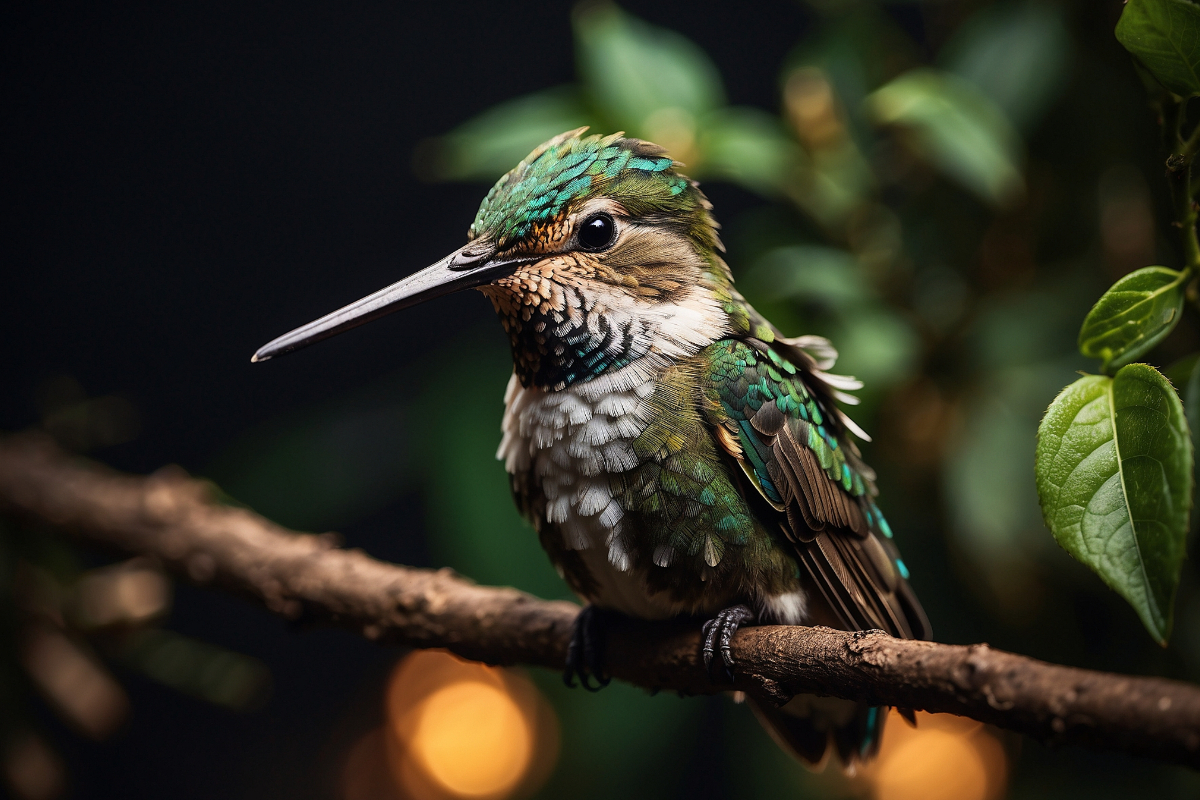When the sun goes down, hummingbirds find a safe place to perch and sleep, usually on a high, thin branch. They often return to the same spot each night and will even hang upside-down by their feet to sleep!
In this blog post, we will explore hummingbird behaviours. We’ll cover where they sleep, how they enter torpor to conserve energy, and the dangers they face at night.
Key Takeaways:
- Hummingbirds enter a hibernation-like state called torpor at night to conserve energy. This slows their metabolism and heart rate.
- They sleep in protected spots like dense trees, bushes, nests, or cavities. Location depends on habitat, species, weather, etc.
- Migrating hummingbirds exhibit different sleep behaviours and preferences than breeding/nesting birds.
- Harsh weather, lack of food/habitat, and predators are key nighttime threats they aim to avoid.
Related post to read about Best Hummingbird Feeders.
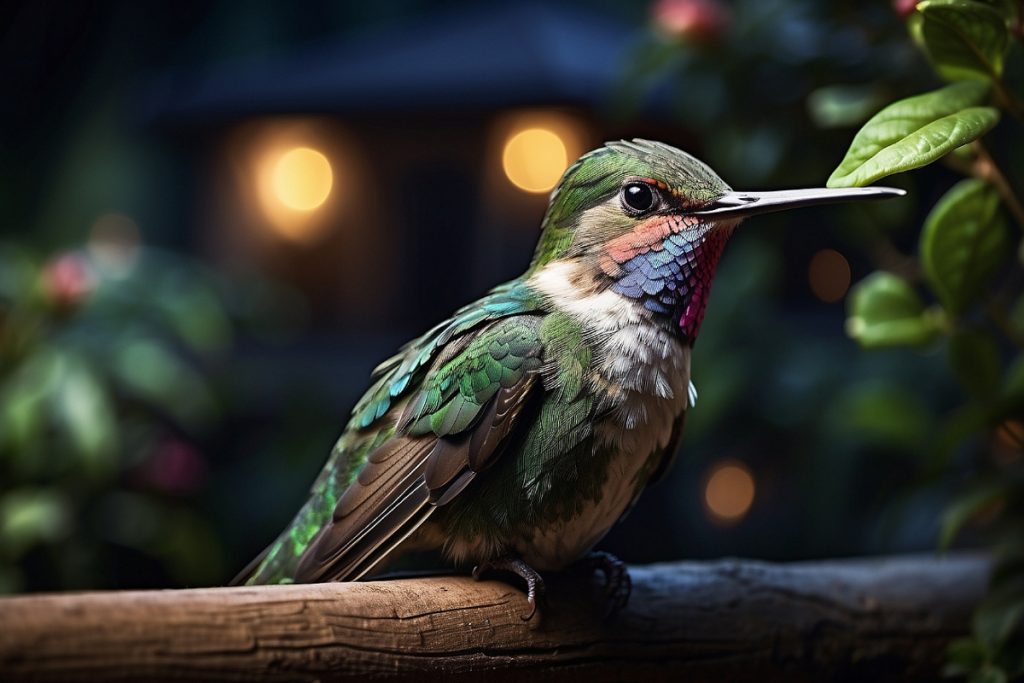
Where Do Hummingbirds Sleep at Night?
Hummingbirds need lots of food to power their rapid metabolism and flight muscles. So when darkness falls and flowers close, they must find safe spots to sleep and conserve energy.
Many people assume hummingbirds simply sleep on tree branches or nests. But their sleeping habits actually vary greatly depending on the species, location, current stage of life, and weather conditions. They are versatile in selecting sleeping sites.
Here are some of their favourite nocturnal accommodation options:
- Dense Trees and Bushes: Shrubs and trees allow cover from weather and camouflage from predators. Some prefer pine trees.
- Nests: Female hummingbirds sleeping on nests keep eggs warm. Males sleep nearby to help protect and feed mothers.
- Cavities: Abandoned woodpecker holes and similar natural hollows help shelter hummingbirds.
- Silk Bags: In cold climates, Anna’s hummingbirds weave silky sleeping bags attached to branches to boost insulation.
Understanding what sites appeal most to hummingbirds in your area can help improve your backyard habitat. Proper trees, shrubs, flowers, feeders etc., invite these aerial masters to stay over.
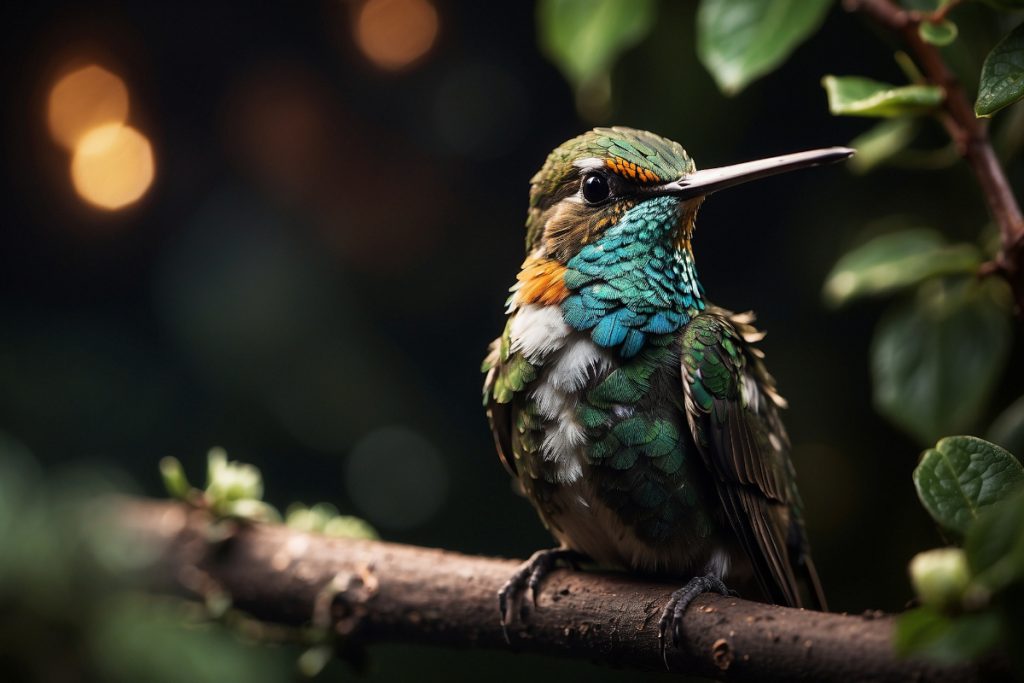
Torpor: The Energy-Saving Sleep State
So, how exactly do hummingbirds sleep? They enter an extreme hibernation-like state called torpor. This is crucial to their survival.
In torpor, a hummingbird’s metabolic activity drops dramatically. Their heart rate, breathing rate and body temperature decrease. This allows them to conserve a tremendous amount of energy through the night.
- Fat stores meeting only 10% of daytime use
- Oxygen consumption slicing an extreme 99%
- Remarkable heart rate plunge from 500 bpm to 50 bpm
By tapping their torpor superpower at night, hummingbirds can stretch their limited energy stores much further. This helps compensate for the inability to hunt nectar sources after dark.
Special Skill Sets of Migrating Hummingbirds
The sleep habits and preferences of migrating hummingbirds differ greatly from their breeding and nesting brethren. Let’s examine how:
Fat Storage
Migrating birds switch to a hyperphagia diet, seeking the most energy-rich sugars possible. This intensive eating allows them to accumulate thick fat layers – critical fuel for lengthy flights.
Flexible Feeding
Hummingbirds normally feed every 10-15 minutes. However, migrants can go without eating for 18 hours by lowering their metabolism via torpor. This saves energy if blooms are scarce.
Opportunistic Lifestyles
Migrants stay alert and sleep in spurts while briefly stopping to rest. This flexibility allows them to capitalise on variable food supplies during their strenuous journeys.
Broad Habitat Tastes
Non-migrating hummingbirds target very specific terrain suited for breeding sites. Migrants are far more tolerant of diverse lands, climate zones, elevations and shelter types.
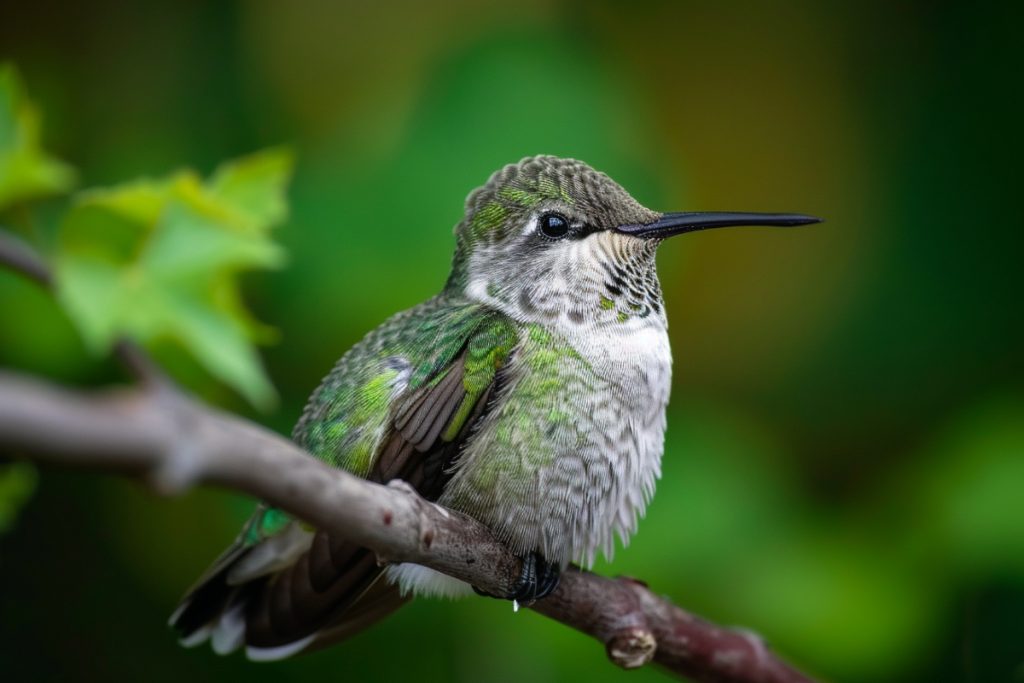
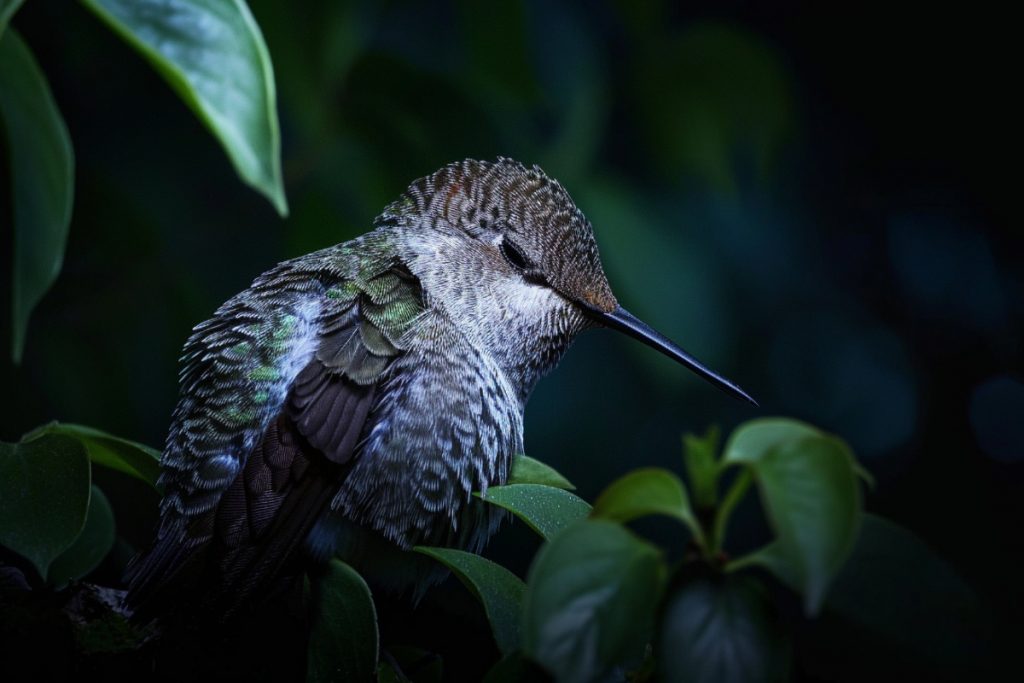
Dangers Faced by Hummingbirds at Night
Hummingbirds already face the constant threat of predator attacks during their frenzied daytime hours. But, the additional dangers that emerge at night force them to be exceptionally cautious when seeking rest. Let’s look at the top threats:
Lack of Food
With no active flowers or insect swarms available, nights bring the intense risk of running out of the quick energy hummingbirds need. Even a few hours without feeding can be devastating. Choosing sleep sites near reliable dawn food sources helps counter this.
Exposure and Weather Extremes
Frigid temps, storms, or heat waves can rapidly drain their tiny energy reserves and sugar levels. Lucky species use specially adapted sleeping behaviours like silk nests or torpor states to battle the elements.
Owls and Other Expert Nocturnal Hunters
Owls have incredible night vision and silent flight. Some even specialise in hummingbird hunting with adaptations like reversible outer toes. Roosting sites must provide dense cover to hide from their targeting ears and talons.
Habitat Loss
As forests decline and backyards replace wildlands, crucial shelter areas and diverse bloom zones disappear. Hummingbirds must then cover more ground, seeking new homes and facing higher threats.
Final Thoughts
The next time you hear a lonely hum pass by as darkness approaches, take a moment to admire the incredible journey hummingbirds have undertaken every day since their emergence over 22 million years ago.
Finding safe rest is just one epic chapter in the marvels of their existence. Our understanding of their nighttime habits continues to evolve almost as rapidly as their wings beat. But each glimpse into their world further unveils the magic within.
Our commitment to thriving will ensure the continuation of their peaceful and serene environment.
I hope you’ve discovered something new and informative about hummingbird sleeping patterns!
Let me know if you have any other questions in the comments.
In the meantime, happy birdwatching!
Useful Links:
Related Posts to Read:
- 25 Hummingbird Behaviors.
- Do Hummingbirds Beaks Open When Feeding?
- 6 Fascinating Facts About Hummingbird Sizes.
- Hummingbird Diet and Nutrition.
- How Much Does A Hummingbird Eat Per Day?
- Do Hummingbirds Eat Bees?
- Do Hummingbirds Eat Wasps?
- Where Do Hummingbirds Go in the Winter?
References:
- About Hummingbird (Link).
- Greenewalt, C. H. (1960). Hummingbirds. New York: Doubleday. Google Scholar.
- Carey C. The impacts of climate change on the annual cycles of birds. Philos Trans R Soc Lond B Biol Sci. 2009 Nov 27; 364(1534):3321-30. doi: 10.1098/rstb.2009.0182. PMID: 19833644; PMCID: PMC2781852.
- Rico-Guevara A, Rubega MA, Hurme KJ, Dudley R. Shifting Paradigms in the Mechanics of Nectar Extraction and Hummingbird Bill Morphology. Integr Org Biol. 2019 Jan 2;1(1):oby006. doi: 10.1093/iob/oby006. PMID: 33791513; PMCID: PMC7671138.
- Tyrrell LP, Goller B, Moore BA, Altshuler DL, Fernández-Juricic E. The Orientation of Visual Space from the Perspective of Hummingbirds. Front Neurosci. 2018 Jan 30;12:16. doi: 10.3389/fnins.2018.00016. PMID: 29440985; PMCID: PMC5797624.
- Hummingbirds Sighting (Journey North Map).
- About Hummingbird’s Characteristics.
- About the Origins of Hummingbirds.
